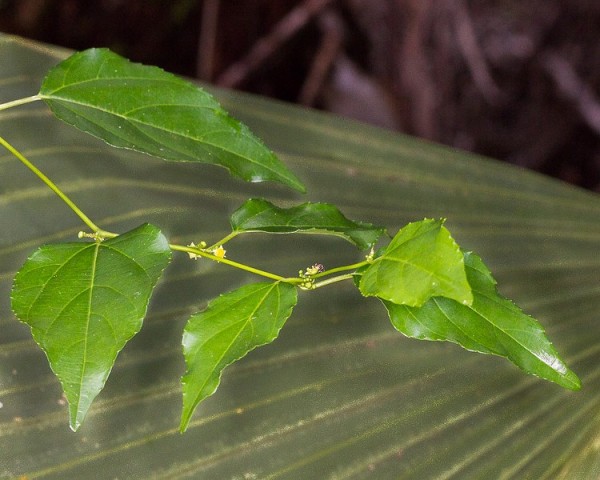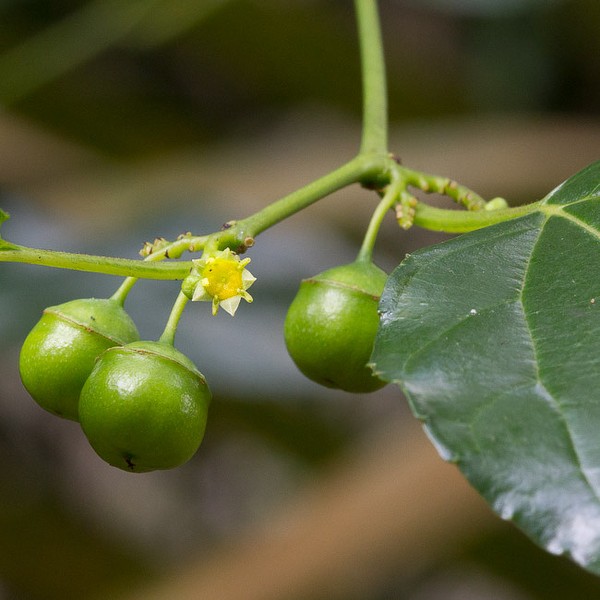Asiatic Snakewood
Colubrina asiatica
Rhamnaceae
As John and George go about our Friday botany biz, sometimes near the sea—especially in the Hobe Sound Wildlife Refuge—we trip over an odd and different-looking woody plant known as Asiatic Snakewood. Although a small number of native species of Colubrina live in southern-most Florida, our local Colubrina is Asiatic Snakewood, an invasive exotic stinker, but an interesting stinker. It thrives in some coastal strand habitats, crowding rudely into hammocks and mangrove areas. Every invasive has its tricks, and one of those earns Snakewood its name; the stems reportedly grow over 30 feet per year, snaking around, rooting where they touch the soil. It’s really no fun ranting about the invasion, so for now let’s try to know thy Snakewood.
Inquiring minds might ask how it got from its presumed origins around Tropical Asia to the Hobe Sound Wildlife Refuge nature trail. Two main possibilities stand out (a combo of the two seems likely).
- Maybe humans brung it, at least to the Caribbean in the 9th Century or before.
- Maybe the seeds floated or came by bird delivery.
To look at possibility # 2 first, this species gets around! Let’s say it originated in Tropical Asia, yet it is regarded as native in Hawaii, and decorates the tropical world from Africa to Australia and beyond. The seed journey begins when the fruit explodes. Pop. The seeds like to float in saltwater. A skeptic might now wonder, “well, if it migrates aggressively, perhaps it managed to get around all the way to the Caribbean and Florida on its own. Wouldn’t it then be native, technically speaking?” (And of course Global Warming could lend a hand.) We’re unlikely to see anyone make that case. I think we can all agree human activity probably had something to do with it. (Or then again, maybe you disagree.)
Which brings us to arrival scenario #1 (we’ll conveniently ignore many other human-mediated but inadvertent and boring possibilities). To appreciate possibility #1, a little background is relevant. Snakewood has a laundry list of traditional medicinal applications, and those long snake-sticks can be woven. The species is chock-full of bioactive chemicals, the most famous being what are known as saponins. Saponins are widespread in the plant world, and some plants make a lot. Another name for Colubrina asiatica is “Latherleaf,” because saponins froth in water, and our species is sapono-tastic. The sudsiness has served humankind, and there’s another benefit: saponins snuff fish. A multi-use weed! You can take a little Colubrina down to the river, launder your drawers and enjoy a seafood lunch.

